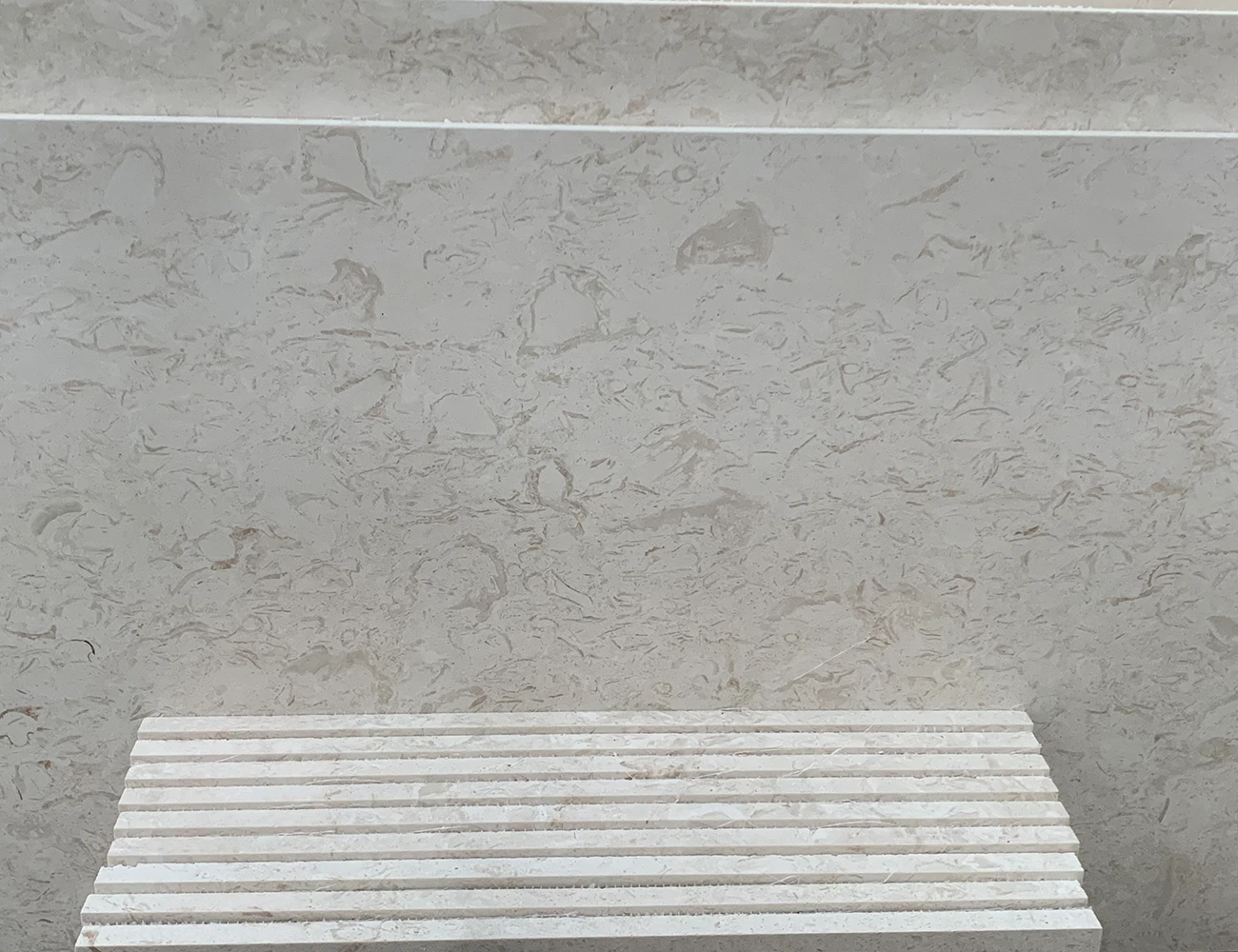Limestone, often called bluestone, is a treasure trove of natural beauty and utility. One of the most plentiful minerals on Earth, its main component is calcium carbonate (CaCO₃), a legacy from past oceans. Considered the “stone of the sea,” limestone has been a fundamental building component and industrial raw source for millennia of human civilisation. But what makes limestone truly special? Let’s investigate its natural beauty, useful features, and distinctive qualities.

A Symphony of Natural Features
Limestone is much more than just a rock; it is a work of art forged by nature over millennia. Its surface frequently reveals intriguing textures and designs, including:
Calcite Veins and Spots: Whirling designs with depth and character.
Fossils and Shells: Hidden stories of prehistoric marine life frozen in time.
Pit Holes and Elongated Structures: Unique features that add texture and intrigue.
Open Grains and Honeycomb Patterns: A tactile beauty that evokes nature’s complexity.
Iron Stains and Crystal Variations: Subtle imperfections that enhance its organic appeal.
These traits give limestone its warm, layered aesthetic, making it a popular choice for architects and designers seeking authenticity and richness in their creations.
The Natural Allure of Limestone
Aesthetic Warmth
Limestone offers soft, warm hues and a gentle texture, radiating a sense of serenity and natural beauty. From rustic farmhouses to sleek modern buildings, its understated elegance fits very well with several architectural forms. For hot climates, where limestone’s moisture-resistant qualities shine, its cool touch makes it a favourite.
Versatility in Application
Whether as an exterior cladding material, a landscape element, or an accent feature for walls, bars, or partitions, limestone fits effortlessly into diverse settings. Its natural look accentuates brickwork, metal, and wood, so improving the whole visual harmony of a room.
Durability Through Time
With proper care, limestone can withstand decades, even centuries, of use. Many historical landmarks built with limestone continue to stand as testaments to its resilience. But limestone’s surface, usually left matte, is more prone to wear, thus it is a less popular option for polished finishes.
Unique Properties and Limitations
Limestone is prized not just for its beauty but also for its specific technical characteristics. In building, its workability and water retention make it absolutely priceless. Limestone greatly increases water retention when mixed into mortar, so addressing the shortcomings of pure cement mortar. Its low strength, slow setting, and higher drying shrinkage mean, however, make it more suited for uses including plastering than for structural components.
Limestone’s absorbent nature has another unexpected benefit: its derivative, quicklime, is a powerful desiccant. Perfect for industrial drying operations, quicklime absorbs moisture from the air.
Technical Insights and Application Guidelines
The thickness of limestone building panels generally defines its application:
Thick Panels (≥12mm): For robust architectural features and cladding.
Thin Panels (8-12mm): Lightweight applications for decorative purposes.
Ultra-Thin Panels (<8mm): Limited to small-scale, non-load-bearing uses.
For structural reliability, back bolt anchoring systems are recommended for limestone cladding. Especially for curtain wall installations, where panel thickness usually falls between 30 and 35mm, thicker than 40mm panels with M8-grade bolts guarantee stability.
Where to Use Limestone
Limestone shines in various architectural and design contexts:
For curtain walls, a strong and aesthetically pleasing option is exterior facade.
Landscape Features: Sculptural elements like fountains, benches, and columns exude charm.
Landscape Features: Sculptural elements like fountains, benches, and columns exude charm.
Interior Accents: Bar counters and partitions gain a sophisticated, natural touch.
Decorative Carvings: The material’s softness allows intricate details in balusters, flower pots, and more.
Its natural matte finish provides a sense of refinement and warmth, perfect for both modern and classical designs. From urban landscapes to rural retreats, limestone adds depth and character to any setting.
Embracing Limestone’s Legacy
Limestone is a material that balances beauty with practicality. Its historical significance, coupled with its modern applications, makes it an enduring choice for architects and builders alike. limestone tells a tale of resilience, adaptability, and natural elegance whether it is used to create classic monuments or comfortable homes.

Limestone is more than just a building material; it’s a celebration of nature’s artistry. For projects calling both form and function, its warmth, adaptability, and special qualities make it a classic choice. limestone can change areas into works of art over time with careful use and appropriate maintenance. From its prehistoric beginnings to its contemporary uses, limestone keeps inspiring and improving architectural ideas.






